Progressive on the future of auto insurance
Auto insurance market
Progressive used their Q2 2017 earnings call to provide an update on their view of the future of the auto insurance industry. Specifically, the potential impact of new technologies and shared mobility.
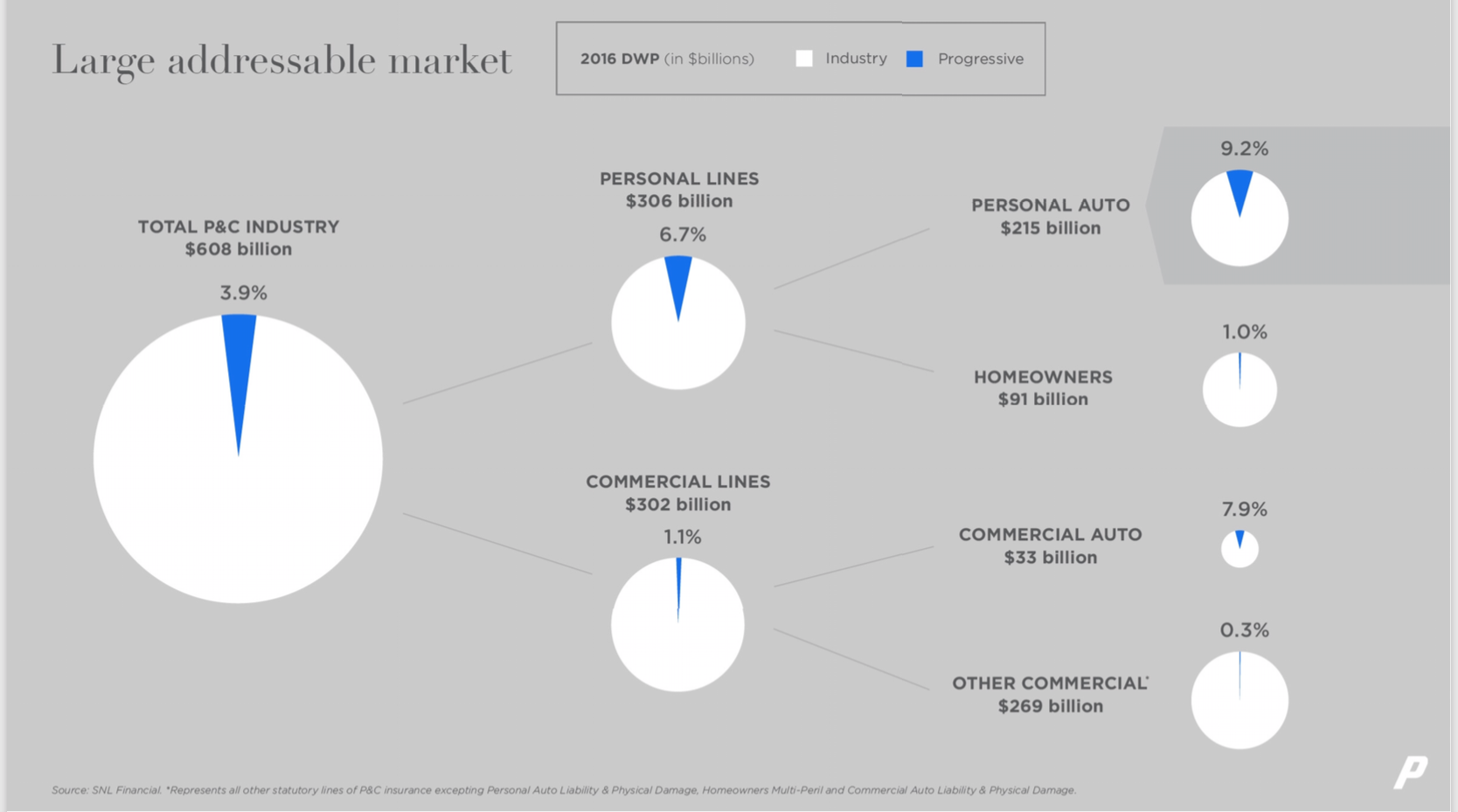
The Personal Auto insurance industry is about one third of the total P&C Industry, or $215 billion of direct written premium in 2016. For most personal lines insurance companies, auto is the largest line of business. Hence, the future of the auto insurance industry is very important for many P&C insurers, including Progressive.
Death of personal auto insurance greatly exaggerated
“The reports of my death have been greatly exaggerated.” - Mark Twain
Many experts are projecting the demise of personal auto insurance due to technological advancements, including autonomous vehicles and crash avoidance technology, as well as the growing sharing economy (e.g. Uber, Lyft).
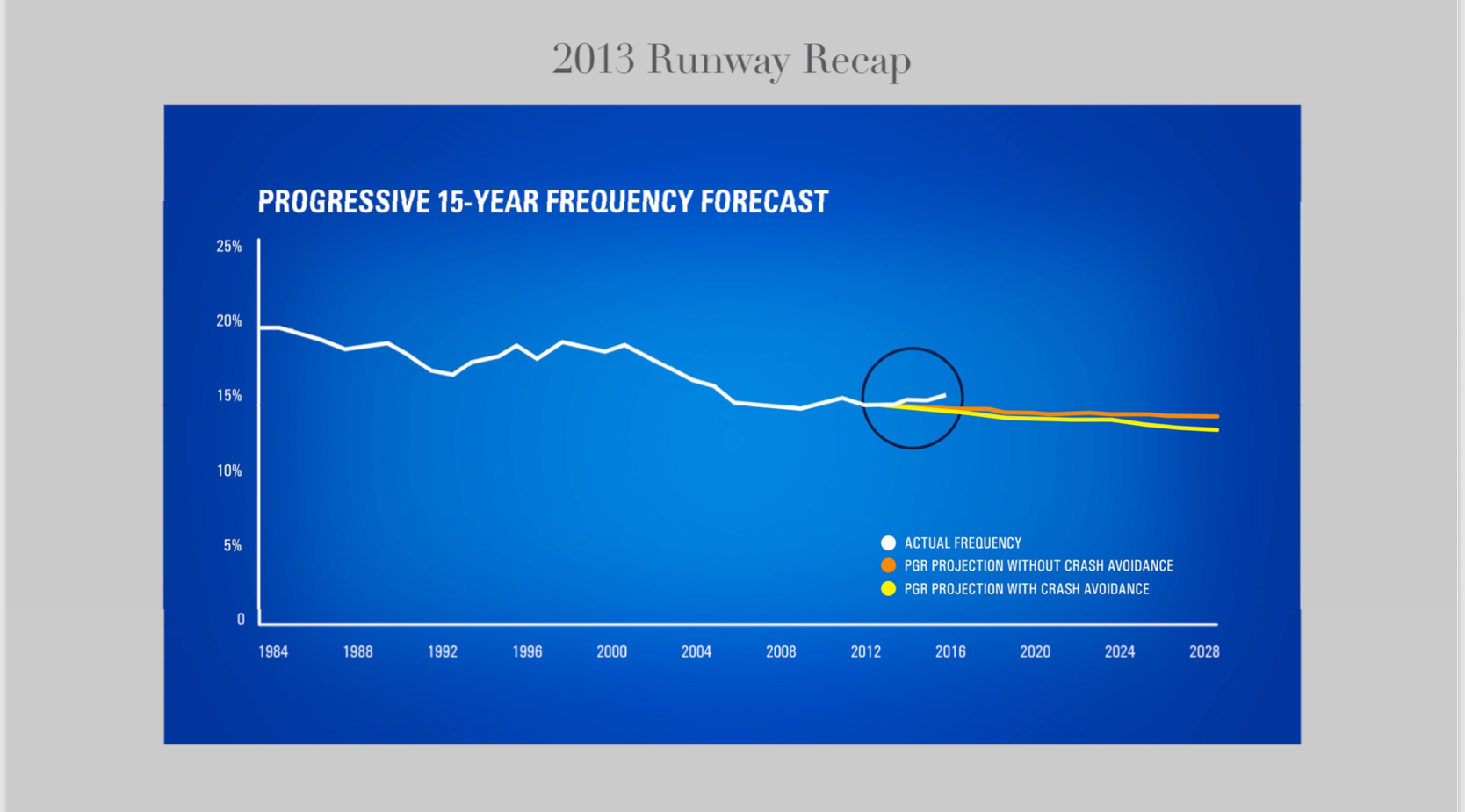
In 2013, Progressive, along with everyone else, projected a continued decrease in auto accident frequency trends. In reality, frequency trends have increased in the past three years. The consensus reasons for this increase include greater miles driven - due to low gas prices and an improving economy - and increased distracted driving.
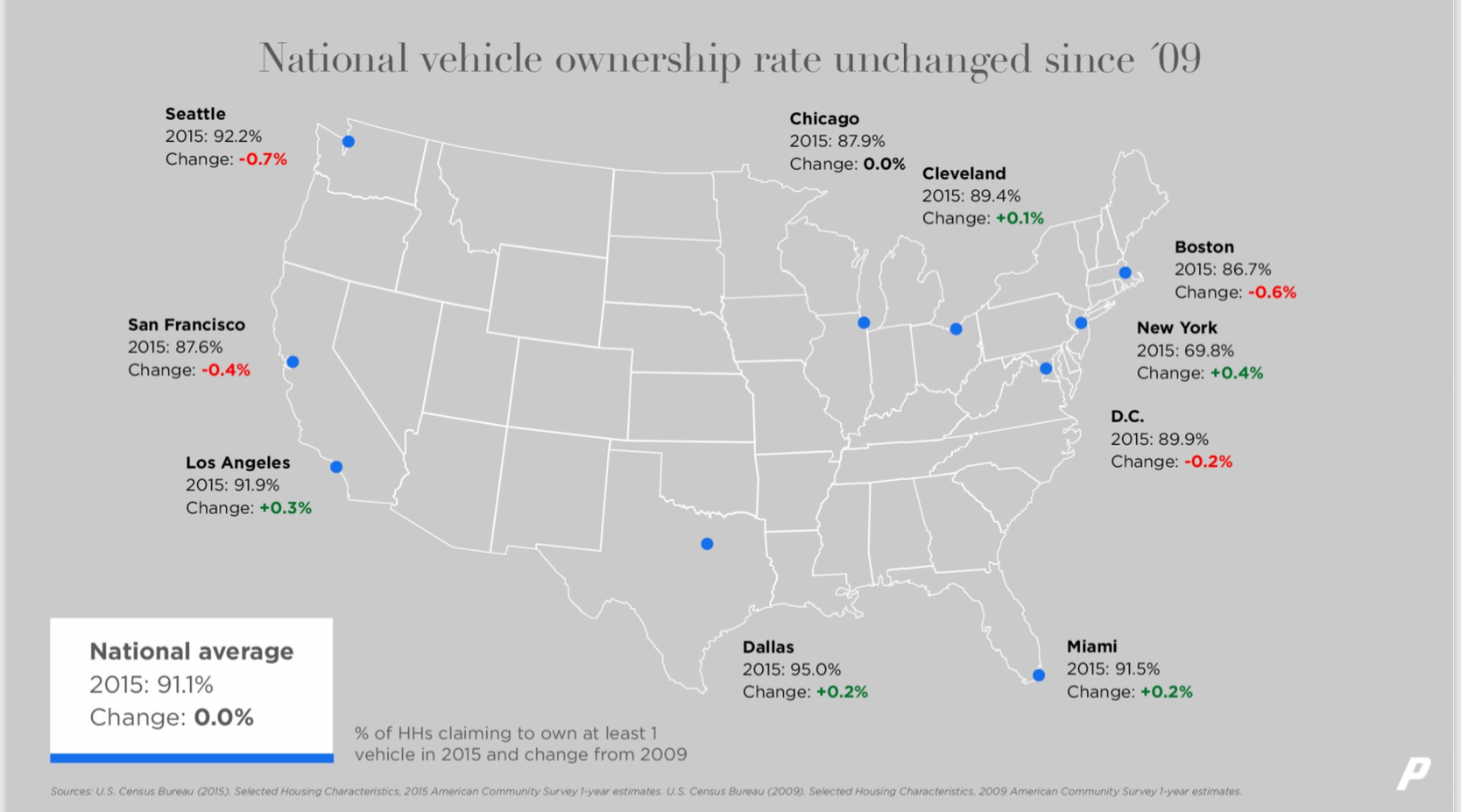
We have yet to see a major impact on car ownership due to the sharing economy. Progressive noted that vehicle ownership in major U.S. cities is relatively unchanged since 2009. Similarly, they showed that the percent of commuters driving alone by age has actually increased across all age groups since 2009.
So our general view on shared mobility at this time is that the majority of consumers will use ride share and other types of services as a supplement to owning a vehicle but not necessarily as a substitute. - John Curtiss, Personal Auto Product Development Leader
Impact of new technology
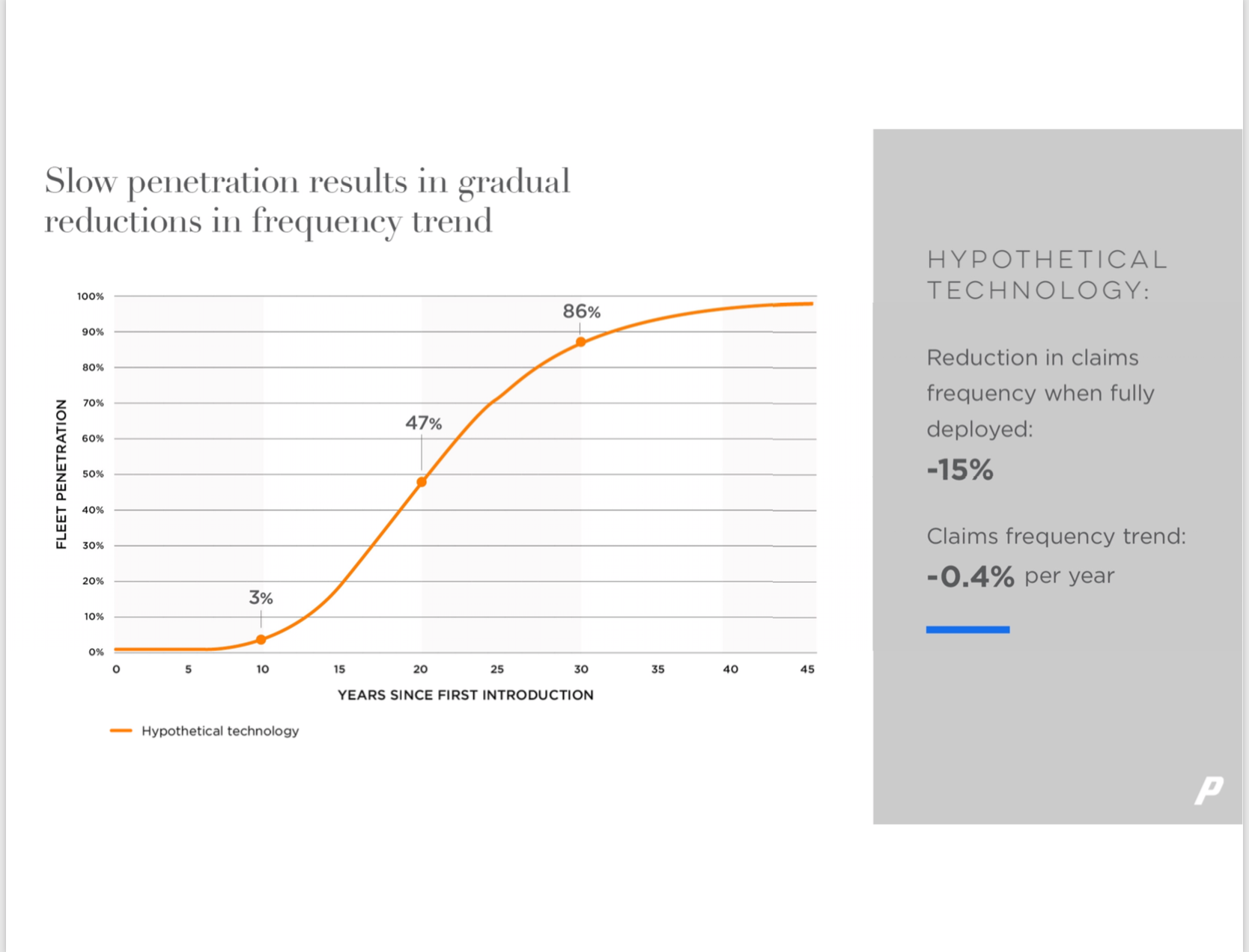
Progressive analyzed the historical penetration of electronic stability control and forward collision avoidance in registered vehicles. It took just under 20 years for electronic stability control to be present in over half of registered vehicles. They project it will take about 10 more years for forward collision avoidance to be available in over half of vehicles.
the average age of the vehicle on the roads today is up to 11.6 years. And this is two years higher than the average back in 2002.
This slow adoption rate of new technology results in a gradual reduction of claim frequency. A hypothetical new technology that takes 20 years to acheive 47% penetration and results in a 15% reduction in frequency when fully deployed, only impacts claims frequency trend by 0.4% per year.
There are a lot of items that can impact the adoption of new vehicle technologies, but given how slowly the vehicle fleet turns over, Progressive’s estimates seem reasonable.
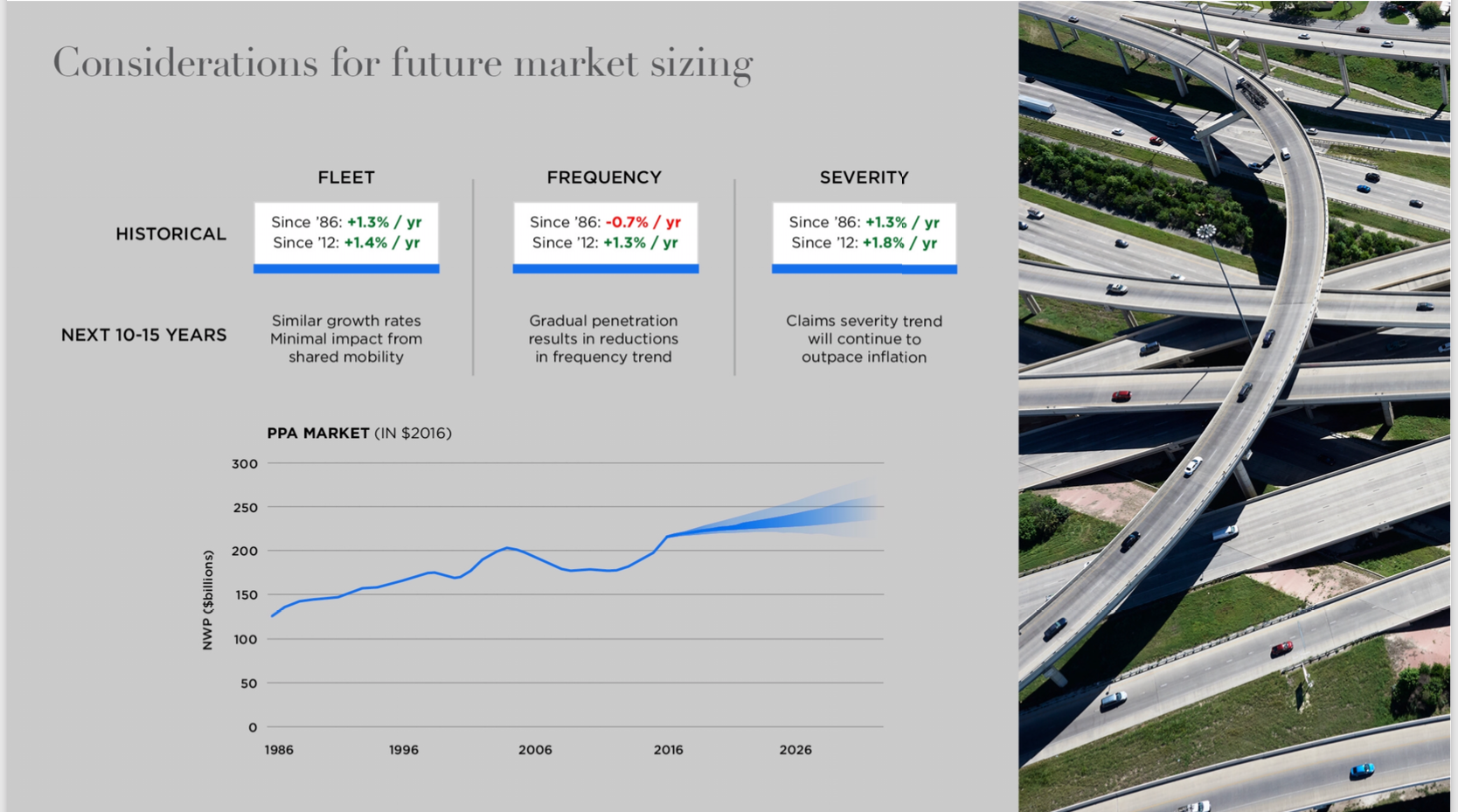
Over the next 10-15 years, Progressive estimates that the personal auto insurance industry will continue to grow. They expect exposures (fleet) to grow at around 1.4% per year, frequency to gradually decrease, and severity trends that continue to increase faster than inflation.
If Progressive’s estimates prove accurate, it will be welcomed by many P&C insurance companies.